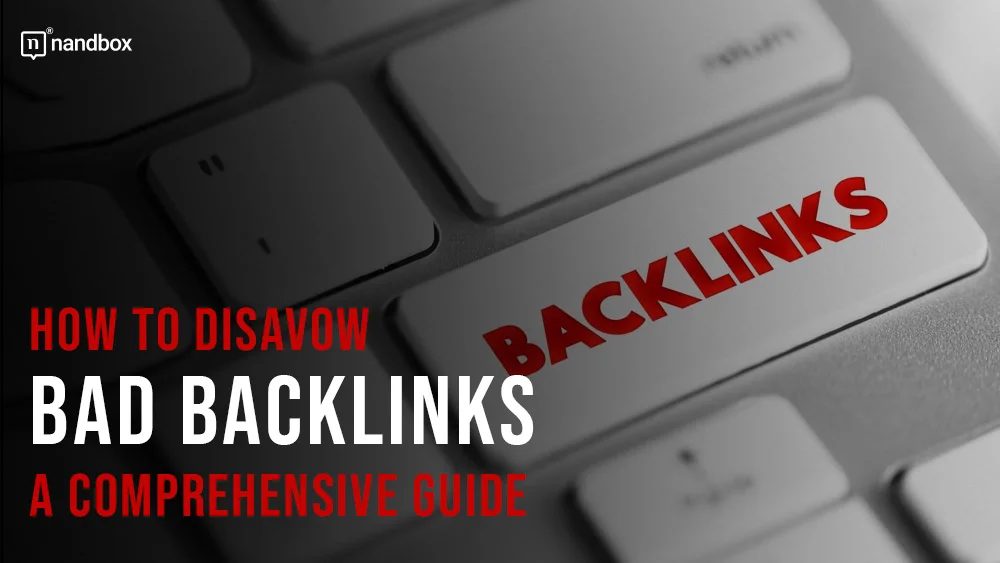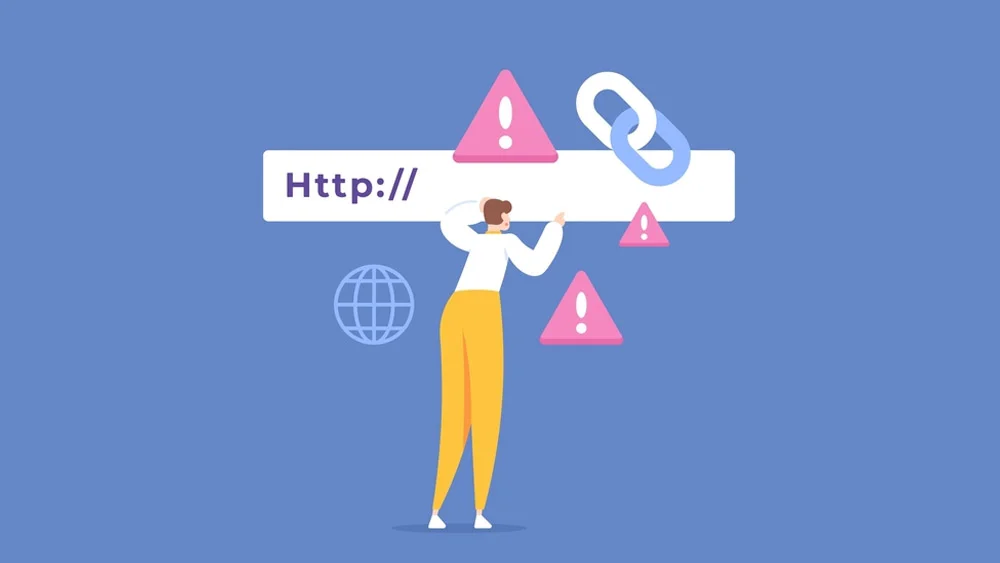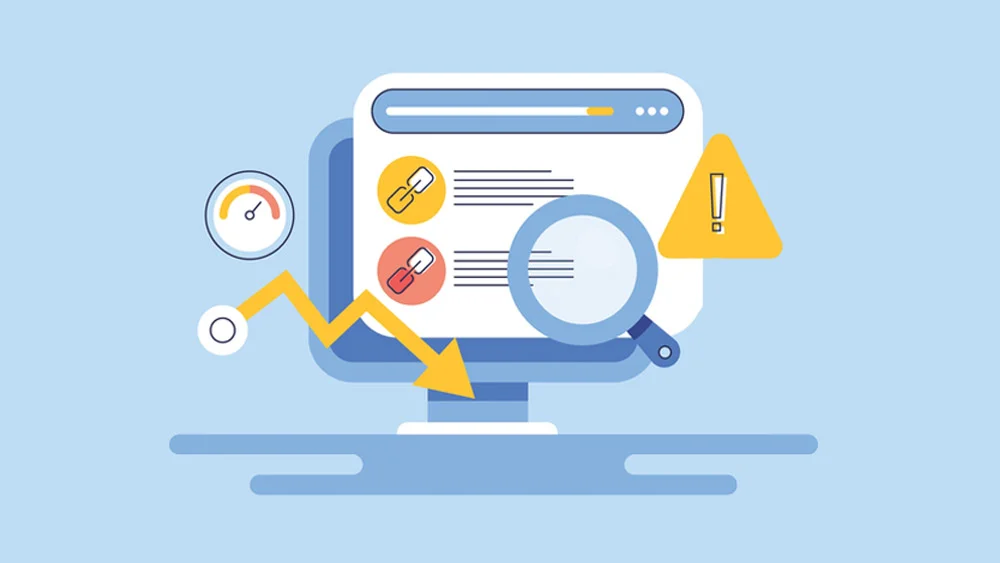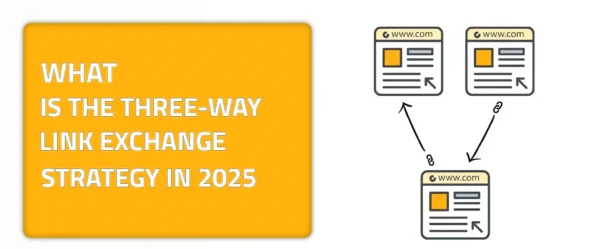Disavowing Bad Backlinks: A Game-Changer for Your Website
Optimizing SEO for websites is a very sophisticated and ongoing process that continues as long as the website stands. In light of the fierce competition among billions of websites on the internet, websites tend to try every possible strategy to accomplish the forever aim of raking in the first result pages. The most utilized strategy by many websites in different industries is building and exchanging backlinks. As much as this strategy can be highly effective, it can also be harmful if utilized poorly. Ever heard of something called bad links? Well, it sounds really bad, and it is. But, luckily, they have an effective solution. In this article, we will explore the most effective way you can get rid of bad backlinks that could damage your website. Without further ado, let us start on the journey of learning how to disavow bad backlinks.
What Are Bad Backlinks and How Can They Impact Your Website?
The first thing we will discover on our journey is what bad backlinks are. Bad backlinks in SEO are the trouble boys in your high school who are always up to no good and everyone refers to them as “bad news.” Toxic backlinks or bad backlinks are all referring links that either come from spammy or toxic websites or are irrelevant. Either way, these links have an unfavorable and damaging impact on SEO and websites, as they give search engine crawlers an indicator that this website is spammy or utilizes black-hat or manipulative SEO practices. This leads to instant penalties by the search engine that are more than enough to de-rank your web pages and decrease your authority.
Types of Bad Backlinks
There are many types of bad backlinks that you can encounter on a daily basis through your SEO optimization journey. Therefore, it is crucial to be able to distinguish and find these backlinks in hopes of maintaining good SEO. So, let us explore the most common types of bad backlinks that you must know about.
Irrelevant Links
The first common type of bad backlinks are irrelevant links. Some websites that follow an excessive link-building and exchanging practice might experience the existence of many irrelevant backlinks, which do more harm than good. Irrelevant backlinks are incoming links from websites that have nothing to do with your industry or scope of expertise. For instance, if you have a tech website and an entertainment website that refers to one of your pages, this is considered an irrelevant link. Having a large number of backlinks is good, but their being irrelevant can damage your SEO, as this is an unfavorable indication from search engines.
Comment Links Spam
Another very common and harmful type of backlink is comment link spam. If you are familiar with blogs and forum comment sections, you may notice that some contain some spam behavior, including website links. This practice is called comment backlinking and has been widely used for quite a while. At first, comment backlinking was effective and many SEO experts relied on it. However, people started to utilize it in a manipulative way, which involved spamming comment sections with website links. Google penalizes this manipulative practice, which hurts SEO.
Sitewide Links
Next on the bad backlinks list are sitewide links. Sitewide links are backlinks that are included in the header, footer, or both of the website. Since the header and footer are constant parts of a website and appear on every page, they give the hint of having many backlinks. As smart as this practice may be, search engines can pick it up, and a website would get penalized. This would greatly harm the website’s SEO and rankings.
Press Release Links
The final type of bad backlinks might appear as a very normal type; however, if they are improperly utilized, they can damage a website’s SEO. The process of publishing press releases always includes a link that refers to your website. This press release has to include something that your business or website actually accomplished, as it has to be genuine. However, some websites tend to publish generic press releases just for the sake of building backlinks, which is a manipulative practice from Google’s perspective.
Disavowing Links: What Does It Mean?
Finding bad or toxic backlinks on your website is a tough situation that any website or business owner can face. But, luckily, every tough situation in SEO has an effective solution. And for bad backlinks, disavowing is the ultimate solution.
Disavowing is the practice where a website owner unclaims or completely removes bad backlinks from his website. This process is done to help search engine crawlers ignore these backlinks and mark them as unwanted in hopes of maintaining good SEO and ranking. This process can be done through many tools that we will discuss later on.
Three Cases Where You Would Need Disavowing
Disavowing sounds pretty serious but wait until you know the cases where you need it the most. This section will demonstrate the common cases where disavowing would be very necessary, which brings you one step closer to how to disavow bad backlinks.
1. You’ve been hit by, You’ve been hit by, a Negative SEO Attack!
The first case where you would desperately need it is a sudden negative SEO attack. A negative SEO attack is the worst thing a website could experience. It is the sudden attacks from competitors or malicious parties that target one specific website with practices like building spammy links, scrapping the content, and many more that could lead to hacking. The moment that you notice a negative and sudden drop in your SEO and irrelevant activities, you may start to disavow these bad backlinks as much as you can to try and reverse this negative impact.
2. Penalty By the Google Referees
Now, the other case is a little different because it doesn’t include competitors. This time, website owners may be the main reason. Website owners tend to play around with many practices, and some of them might not be legit or favorable. They can also start building links with websites without looking into the necessary information about them, such as DA. All of this can result in a penalty for Google, which is not a good sign. Luckily, this penalty can be reversed easily by disavowing these links and marking them as unwanted. Another solution for this is using link-exchanging platforms that help you build trusted backlinks, such as LinkExchange.AI.
3. Time for Some change; Time for a Redesign
The last case is redesigning or restructuring a website. Platforms and websites might need a new makeover from time to time, which can be quite tough given all the information and links that go into the old website’s structure. This restructuring or redesigning will help you discover bad and spammy backlinks that can comprise the whole process. However, this can be easily fixed by disavowing.
Importance of Disavowing Bad Backlinks
Protecting Site Reputation and Credibility
Backlinks serve as evidence of your website’s authority. Your site’s credibility can take a hit if search engines see that it has links from questionable or spammy sources. You can keep up a good and reliable reputation by disavowing these links.
Preventing Penalties from Search Engines
When a website’s backlink profile looks questionable or spammy, search engines like Google penalize the site. These penalties have the potential to drastically alter your site’s position. Which leads to diminished exposure or perhaps total exclusion from search engine results. The likelihood of receiving such penalties can be reduced by disavowing damaging links.
Safeguarding Against Negative SEO Attacks
Threat actors or competitors may try to lower your site’s rating by purposefully constructing low-quality connections to it. By removing these unfavorable backlinks, you may protect your site from harmful SEO strategies and avoid unfair penalties caused by manipulative linking techniques.
Enhancing User Experience and Trust
Maintaining a clean backlink profile improves the user experience. Website visitors have high expectations for everything that they find when they follow links to yours from authoritative sites. If you want your users to have a positive experience and have confidence in your site, you need to get rid of those unwanted bad backlinks.
How to Disavow Bad Backlinks: Tools That Effectively Help You Disavow Links Easily
Now that we have come to the most important part of the article, which is how to disavow bad backlinks. Disavowing bad backlinks is easier than you may have thought, as there are plenty of tools available to help you both discover and remove such links.
The first and most-used tool to disavow bad backlinks is Google Search Console. Through the Google Search Console, you can get full insight and a report about your website’s SEO. This starts by generating a website audit report for all external links. This report will show you a full list of external links where you can see which can be considered spammy or harmful. After that, you would make a list of the links that you want to disavow and submit them to the disavow section of the tool. Google Search Console is the main tool for disavowing, as all other tools would still use it in the end.
The second tool you could use efficiently for disavowing bad backlinks is SEMrush. SEMrush is a comprehensive SEO tool that will give you a glimpse of everything that is going on with your website. Through the backlink audit section, you will see the full list of toxic backlinks with the toxicity score and which page they are referring to. You will then choose any and click on the disavow button, which will export it to the file that will be submitted to Google Search Console.











